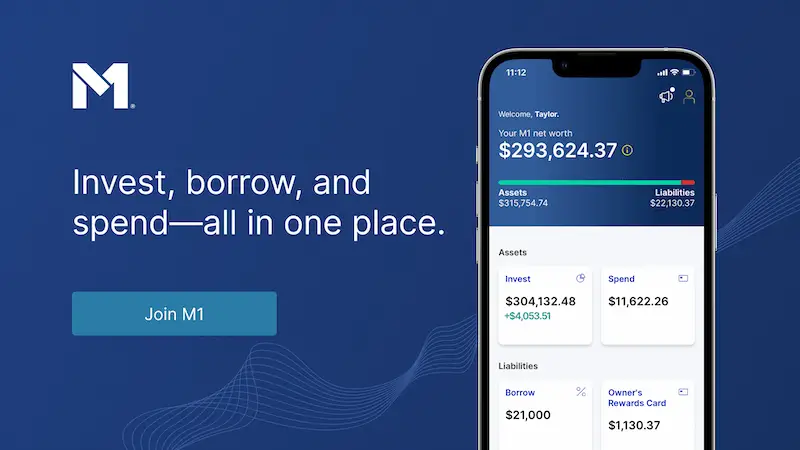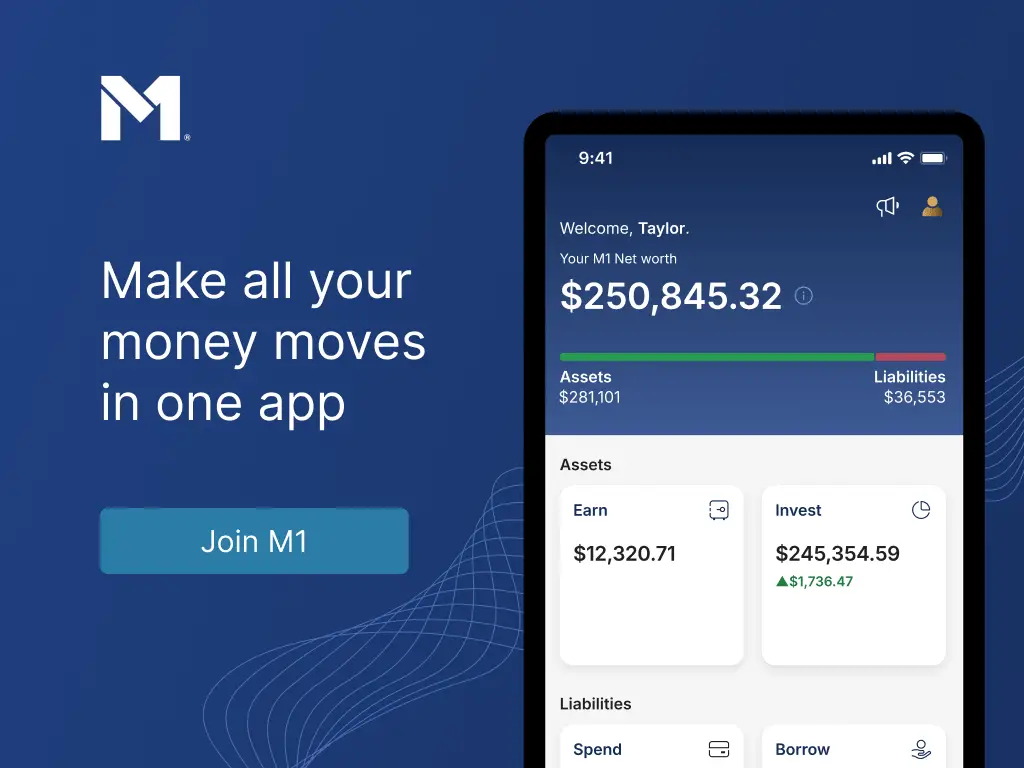Retirees have unique needs when it comes to their investment portfolios. Here I've assembled what I think are the best ETFs for retirement portfolios in 2025.
Disclosure: Some of the links on this page are referral links. At no additional cost to you, if you choose to make a purchase or sign up for a service after clicking through those links, I may receive a small commission. This allows me to continue producing high-quality content on this site and pays for the occasional cup of coffee. I have first-hand experience with every product or service I recommend, and I recommend them because I genuinely believe they are useful, not because of the commission I may get. Read more here.
Contents
Retirement ETFs Video
Prefer video? Watch it here:
Introduction – What Retirees Need From ETFs
Obviously, many ETFs are perfectly suitable for both the young investor at age 20 and the retiree at age 60. But the latter has fundamentally different needs. Note that if you're already using a target date fund, you probably don't need anything from this list.
As I've said elsewhere, diversification and subsequent de-risking of the portfolio become more important when entering retirement. Provided they've accumulated enough to cover expenses in retirement, the retiree should almost certainly be sacrificing some returns to lower the portfolio's volatility and risk. This necessity is largely due to what's called sequence risk, which refers to the risk that the retiree encounters a bad “sequence” of returns in their first few years, which can derail their entire plan. Since the retiree is withdrawing from the portfolio every year, they don't have time to recover from protracted bear markets.
The retiree should also probably not be using any portfolio leverage. Leverage enhances exposure without additional capital outlays. This increases volatility and risk. Once again, the retiree should be aiming to mitigate those two things.
So how exactly does that translate into ETFs to use in retirement? We're specifically looking for:
- Maximum diversification (particularly, assets that offer a demonstrable diversification benefit) in order to mitigate volatility and risk.
- High credit quality bonds, so U.S. treasury bonds. No room for the credit risk, liquidity risk, and default risk of corporate bonds. I explained this here. Even target date funds tend to miss the bullseye here.
- “Defensive” stocks.
- Low fees.
- Direct inflation protection from TIPS. Young investors probably don't need this.
- “Income” funds, maybe. This one hinges on whether the retiree simply wants to sell shares as needed (my preferred method) or use funds with a high dividend/distribution yield to generate “income.” Aside from bond interest, this could be in the form of dividend stocks, REITs, CEFs, covered call option premiums, etc. Thankfully, the ETFs below should satisfy both audiences.
At the end of this post, I'll suggest a model portfolio for how all these things might fit together. Let's dive into the list.
The 10 Best ETFs for Retirement Portfolios
I've assembled the list of retirement ETFs below based on the specific needs I listed above.
VT – Vanguard Total World Stock ETF
In terms of diversification within equities, it probably makes sense to start with the global stock market as a core holding. I've explained elsewhere why it's probably not prudent to concentrate solely in U.S. stocks. This single fund holds the global stock market at market cap weights.
VT seeks to track the FTSE Global All Cap Index and has an expense ratio of 0.07%.
AVUV – Avantis U.S. Small Cap Value ETF
Factors aren't just for young folks. While it may seem counterintuitive, diversifying the portfolio's risk factor exposure not only increases expected returns, but also conveniently – and more importantly in this context – lowers the risk of the portfolio.
With this fund we're mostly looking for Value stocks within small stocks. This fund actually provides appreciable loading on the Size, Value, and Profitability factors, and also considers Momentum in its trades.
Here's a fun fact. There have been fewer 10-year periods when the Value premium was negative than when the equity premium (total stock market risk, called market beta) was negative.
AVUV from Avantis seems to be the best one to capture small cap value stocks in the U.S. I compared it to some other popular funds separately in this post.
This fund has an expense ratio of 0.25%.
AVDV – Avantis International Small Cap Value ETF
Similarly, we'd want to extend that factor diversification beyond U.S. borders. Just like AVUV, AVDV is also from Avantis, seeking to deliver factor exposure in international stocks.
AVDV has an expense ratio of 0.36%.
GOVT – iShares U.S. Treasury Bond ETF
You might have been expecting to see BND from Vanguard – the total U.S. bond market – for bonds on this list. I've gone into detail elsewhere about how and why we probably only want to use government bonds (also called treasury bonds) as opposed to other bond types like corporate, mortgage, municipal, etc.
In a nutshell, U.S. treasury bonds are the highest credit quality out there, and are thus the typical “flight to safety” asset during market crashes. They also have a reliably lower correlation to stocks than corporate bonds, and do not possess the credit risk, liquidity risk, and default risk that corporate bonds possess. Because of all this, treasury bonds should likely be the sole bond choice in diversified retirement portfolios alongside stocks.
GOVT from iShares provides low-cost exposure to the total U.S. government bond market across all maturities from 1 year to 30 years. Its effective duration is about 7 years, the same as an intermediate term bond fund. Long bonds are probably better for the young investor, but the retiree with a bond-heavy portfolio should almost certainly decrease the portfolio's effective bond duration.
GOVT seeks to track the ICE U.S. Treasury Core Bond Index and has an expense ratio of 0.05%.
FUTY – Fidelity MSCI Utilities Index ETF
Utilities are a go-to for “defensive” stocks that tend to weather downturns better. This is because demand for utilities – water and electricity providers – stays relatively unchanged, which is why they're called noncyclical. As such, we would expect lower returns from utilities stocks, but they should reliably survive periods of market turmoil better than other, more cyclical sectors. Utilities also happen to have the lowest correlation to the broader market of any sector and typically pay a high, stable dividend.
Unfortunately, utilities only make up a little over 2% of the total stock market at their market cap weight, so we want to slightly overweight them to take advantage of all those benefits.
FUTY from Fidelity seeks to track the MSCI US Investable Market Utilities 25/50 Index and has an expense ratio of 0.08%. Top holdings include names like NextEra, Southern Company, Duke Energy, and Dominion Energy.
FSTA – Fidelity MSCI Consumer Staples Index ETF
The same ideas apply to a sector called Consumer Staples. Just like with Utilities, demand for Consumer Staples stays relatively constant and these companies are likely to pay a dividend. This sector includes food, tobacco, beverage, and personal care products. Household names include the likes of Procter & Gamble, Coca-Cola, Walmart, Costco, General Mills, and Kraft.
FSTA seeks to track the MSCI US Investable Market Consumer Staples 25/50 Index and has an expense ratio of 0.08%.
STIP – iShares 0-5 Year TIPS Bond ETF
Treasury Inflation Protected Securities, or TIPS for short, are the only asset directly linked to inflation. The principal is adjusted upward semi-annually based on the Consumer Price Index (CPI).
Stocks are a good inflation hedge over the long term, but retirees must be concerned with the short term, so TIPS become an essential part of the fixed income allocation in the retirement portfolio. Again, the retiree is constantly withdrawing from the portfolio, so high unexpected inflation can be particularly damaging to the retirement portfolio.
STIP from iShares is a low-cost short TIPS ETF that seeks to track the Bloomberg US Treasury TIPS (0-5 Y) Index. It has an expense ratio of 0.03% and an effective duration of about 2 years.
SCHH – Schwab U.S. REIT ETF
Real Estate Investment Trusts, or REITs for short, are a highly liquid vehicle for exposure to real estate without buying private property. Equity REITs include things like apartment complexes, hospitals, hotels, cell towers, office buildings, warehouses, and more.
I delved into the details of REITs in a separate post here. The important takeaway here is that REITs tend to be lowly correlated to the broader stock market, and they only comprise about 4% of the market at their market cap weight. REITs must also distribute almost all of their revenue from rental income, so they offer high, stable dividends. Lastly, REITs are a decent inflation hedge because landlords can directly pass on inflation costs to tenants in the form of higher rents.
SCHH from Schwab covers U.S. REITs via the Dow Jones Equity All REIT Capped Index at a cost of 0.07%.
VNQI – Vanguard Global ex-U.S. Real Estate ETF
International REITs tend to be lowly correlated to the U.S. stock market, the international stock market, and U.S. REITs. Just like with the broader stock market, it's probably sensible to diversify globally with REITs.
VNQI from Vanguard provides international REIT exposure via the S&P Global x United States Property Index at an expense ratio of 0.12%.
GLDM – SPDR Gold MiniShares Trust
This fund tracks the spot price of gold bullion. We shouldn't expect any spectacular returns from gold, but it tends to be a decent hedge against uncertainty and, more importantly, is lowly correlated to every other asset on this list, offering a diversification benefit. Like TIPS, the young investor probably shouldn't have any gold if they have a moderate to high tolerance for risk, but the retiree can rely on gold to lower the portfolio's volatility and risk.
GLDM has an expense ratio of 0.10%.
Sample Retirement Portfolio Using These ETFs
Here's how these assets might look in a hypothetical 40/60 retirement portfolio:
- 15% Global Stocks
- 4% Small Cap Value
- 3% Utilities
- 2% Consumer Staples
- 6% REITs
- 10% Gold
- 30% Intermediate U.S. Treasury Bonds
- 30% TIPS
Using our list of ETFs above, here's how that shakes out:
- VT – 15%
- AVUV – 2%
- AVDV – 2%
- FUTY – 3%
- FSTA – 2%
- SCHH – 3%
- VNQI – 3%
- GLDM – 10%
- GOVT – 30%
- STIP – 30%
If you're using M1 Finance, here's a pie link for this portfolio.
Critics will say this looks overly complicated and could be simplified, which is absolutely fair. However, I'd argue that every individual fund above has its own unique purpose. Einstein once said “everything should be made as simple as possible, but no simpler,” meaning oversimplification for the sake of simplification per se can be just as much of an issue as complexity.
Some may not care for the sector and factor tilts, and that's okay. I always acknowledge that uncertainty and tracking error regret are real concerns that may cause an investor to abandon their strategy. One must have high conviction in and understanding of their strategy in order to stay the course. Here's a simplified version without the sectors and factors, using the same 40/60 allocation:
- VT – 30%
- GLDM – 10%
- GOVT – 30%
- STIP – 30%
Here's an M1 pie link for this version.
Where To Buy These Retirement ETFs
All these ETFs above should be available at any major broker. My choice is M1 Finance. M1 has zero trade commissions and zero account fees, and offers fractional shares, dynamic rebalancing, and a sleek, user-friendly interface and mobile app. You can also set up automatic transfers and withdrawals, which is a huge benefit for retirees. I wrote a comprehensive review of M1 Finance here. Investors outside the U.S. can use eToro.
What ETFs do you plan to use in retirement? Let me know in the comments.
Are you nearing or in retirement? Use my link here to get a free holistic financial plan and to take advantage of 25% exclusive savings on financial planning and wealth management services from fiduciary advisors at Retirable to manage your savings, spend smarter, and navigate key decisions.
Disclosure: I own AVUV and AVDV in my own portfolio.
Interested in more Lazy Portfolios? See the full list here.
Disclaimer: While I love diving into investing-related data and playing around with backtests, this is not financial advice, investing advice, or tax advice. The information on this website is for informational, educational, and entertainment purposes only. Investment products discussed (ETFs, mutual funds, etc.) are for illustrative purposes only. It is not a research report. It is not a recommendation to buy, sell, or otherwise transact in any of the products mentioned. I always attempt to ensure the accuracy of information presented but that accuracy cannot be guaranteed. Do your own due diligence. I mention M1 Finance a lot around here. M1 does not provide investment advice, and this is not an offer or solicitation of an offer, or advice to buy or sell any security, and you are encouraged to consult your personal investment, legal, and tax advisors. Hypothetical examples used, such as historical backtests, do not reflect any specific investments, are for illustrative purposes only, and should not be considered an offer to buy or sell any products. All investing involves risk, including the risk of losing the money you invest. Past performance does not guarantee future results. Opinions are my own and do not represent those of other parties mentioned. Read my lengthier disclaimer here.

Are you nearing or in retirement? Use my link here to get a free holistic financial plan and to take advantage of 25% exclusive savings on financial planning and wealth management services from fiduciary advisors at Retirable to manage your savings, spend smarter, and navigate key decisions.




Thanks very much for the post and suggested portfolio. Just one question. You’ve mentioned a few times it seems that you are not a proponent of income investing and plan to “sell shares as needed” from your future retirement portfolio. Could you expand on this a bit? For instance, would you sell the winners once a year to keep the portfolio in balance? How would you pick which assets to liquidate from? How often would you sell? etc.. curious. thanks!
Great question, Danny. I’d sell for tax efficiency first (i.e. tax loss harvesting) and rebalancing second (selling winners). A broker like M1 does this for you automatically; it’s just a single Sell button for the entire portfolio, and you can even automate those regular withdrawals/sales. This would likely be different at other brokers having to choose specific assets to sell.
Hey John….Why STIP and not VTIP, or SCHP? Asking for a friend……lol
STIP is cheaper for the same index. SCHP is intermediate.
What is your opinion on VRIF?
Hi John. Thanks for your work!
I’m looking for your opinion on GOVT vs VGIT for this sample retirement portfolio.
They’re fairly interchangeable, as both are intermediate in effective duration, though their durations differ very slightly.
IAUM is sgol but lower expense ratio
Yea I’m going to be working that one in here soon. It’s relatively new.
Your Retirement Portfolio seems well thought out.
I’m 79 so I’m considering it.
What has been its historical return, MDD and UPI/Martin score?
I’m also interested in this info
Was there any reason you considered SCHH vs VNQ? As I understand it, SCHH excludes mortgage and hybrid REITs whereas VNQ does. Is there potential risk with mortgage and hybrid REITs to consider excluding?
Thanks!
Cheaper. VNQ does not include mortgage REITs.
How do you feel about this portfolio vs your Ginger Ale portfolio optimized for retirement?https://m1finance.8bxp97.net/QONym6
I will retire next year at age 60, but I really don’t need to tap my investments as I have a good pension.
ps: I really enjoy reading your website and like the way you present the information.
Thanks, Brian! Sounds great to me!
So if you were retired would you lean toward SWAN or this portfolio?
This one. SWAN is still leveraged. Retirees probably shouldn’t be messing with any leverage, at least in my humble opinion.